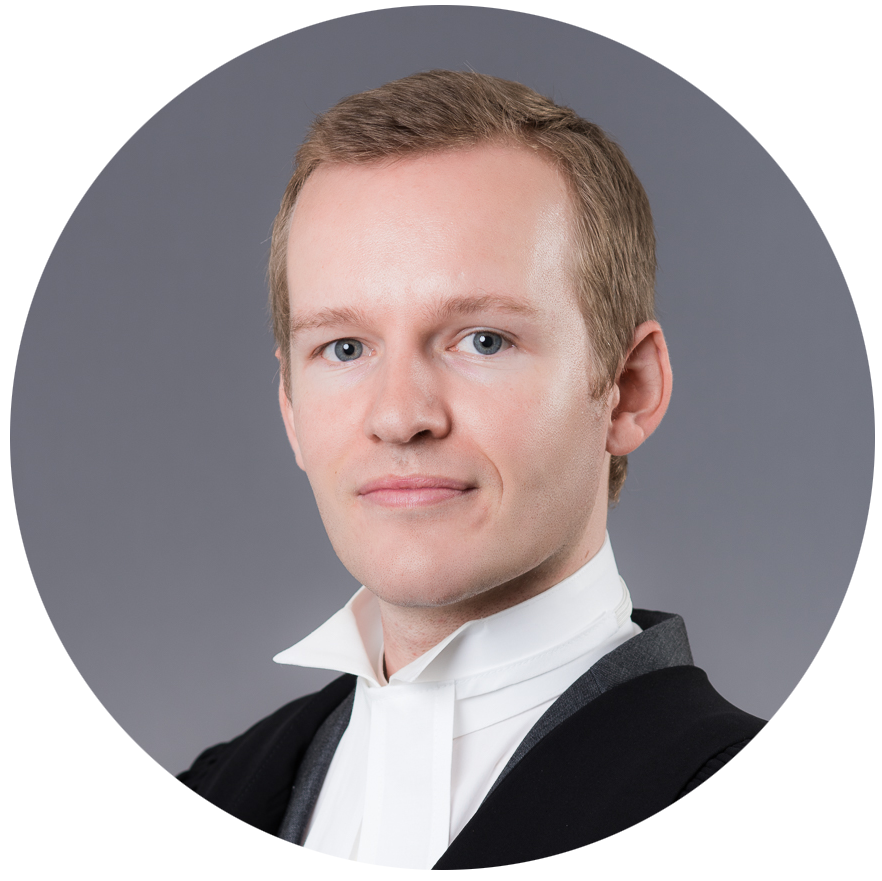Affirmation of Baptismal Faith in the Context of Gender Transition
Christopher Grout
Cover image: “Baptistry” by patentboy is licensed under CC BY-NC-ND 2.0 .
What is the position of an individual who, having transitioned from one gender to another, seeks baptism within the Church of England? The sacramental nature of baptism is described in the Thirty-nine Articles of Religion and the requirements associated with the baptism itself in the Canons of the Church of England. 1 See, in particular, Canons B21-B25 Article XXVII of the Thirty-nine Articles of Religion provides:
BAPTISM is not only a sign of profession, and mark of difference, whereby Christian men are discerned from others that be not christened, but it is also a sign of Regeneration or new Birth, whereby, as by an instrument, they that receive Baptism rightly are grafted into the Church; the promises of forgiveness of sin, and of our adoption to be the sons of God by the Holy Ghost, are visibly signed and sealed; Faith is confirmed, and Grace increased by virtue of prayer unto God. The Baptism of young Children is in any wise to be retained in the Church, as most agreeable with the institution of Christ.
The Church of England teaches that the sacrament of baptism can only be performed on an individual once during their lifetime. Yet special provisions can be made in circumstances where the validity of an individual’s baptism may be in question or where a person seeks baptism, usually as an adult, but does not know if they were baptised as a child. In these circumstances, a “conditional” baptism may be performed.2 See Canon B28.1 and Common Worship (Baptism and Confirmation, Notes, paragraph 8), available online, accessed 11 November 2019 The question has thus been raised: Does an individual’s transition from one gender to another warrant a new baptism? This issue is bound up with many other sacramental and ritual questions that the Church of England, like other traditions, is grappling with as our appreciation for the complexities of human sex and gender identities grows.
In July 2017, the General Synod of the Church of England supported a call for the House of Bishops to consider preparing nationally commended liturgical materials to mark a person’s gender transition. Although the vote was not unanimous, it was overwhelming. 3 The votes in the House of Bishops were 30 for and 2 against, with 2 abstentions. In the House of Clergy 127 backed the motion with 28 against and 16 abstentions. In the House of Laity 127 supported the motion with 48 opposing and 8 abstentions. A live stream of General Synod proceedings can be viewed here: https://www.youtube.com/playlist?list=PLcc_HT5TeqjrIaAH0jLZz760DR9yxrXOv
In light of this development, in December 2018 the Church of England published ‘Pastoral Guidance for use in conjunction with the Affirmation of Baptismal Faith in the context of gender transition’ (hereafter “the Guidance”). The opening paragraph of the Guidance “welcomes and encourages the unconditional affirmation of trans people, equally with all people, within the body of Christ, and rejoices in the diversity of that body into which all Christians have been baptized by one Spirit.”
With respect to baptismal sacraments for transgender individuals, Paragraph 2 of the Guidance provides that where a transgender person had not already been baptized, “baptism itself would be the natural liturgical context for recognizing and celebrating their identity in Christ and God’s love for them.” Where, however, a transgender person has already been baptized but nevertheless wishes to celebrate their transition in Church, the House of Bishops commends the rite of Affirmation of Baptismal Faith as “the central feature of any service to recognize liturgically a person’s gender transition.”
Recognising that “everyone’s journey through life is unique”, the Guidance refers to the sensitivity required to be undertaken by the minister to ensure that the person’s preferred name and pronouns are used throughout the service.4Paragraph 3 The Guidance also makes clear that ministers should meet with the person “to understand better their personal journey” prior to the service.5Paragraph 4 Furthermore, the Guidance deals with issues such as appropriate readings, the presentation of the person, the use of water, anointing, the giving of gifts and certification.6See generally the Guidance, Paragraphs 6-12 Acknowledging that the use of the person’s name will likely be of particular significance, Paragraph 9 provides that:
For a trans person to be addressed liturgically by the minister for the first time by their chosen name may be a powerful moment in the service. Some trans people may not wish their former name or gender to be mentioned. It should be noted that the giving or adoption of a new name has a long history in the Judeo-Christian tradition as may be evidenced from Scripture. In some Christian circles, for example, it is customary for candidates to adopt an additional or saint’s name at their confirmation. In monastic communities it is not unusual for a person, either on receiving the habit or at profession, to take a new name.7Paragraph 9
While the Guidance appears to have been warmly received by the majority of bishops and clergy, it has not been unanimously welcomed, including by the laity. One member of the archbishops’ council, the Rev Ian Paul, was quoted as suggesting that church leaders were “allowing themselves to be hijacked by these very small special interest groups.” Also, in January 2019 it was reported in The Guardian that “more than 2,000 clergy and lay members of the Church of England have signed a letter calling on bishops to withdraw or change [the Guidance].” The letter, the text of which is available online, recognises that “gender dysphoria is an emotionally painful experience that requires understanding, support and compassion” but concludes that “we do not believe that the Guidance is the right way to do this, since it raises some significant issues for the Church’s belief and practice.” The letter offers seven points in support of this contention, including allegations of misuse of the liturgy as well as concern over the comparison within the Guidance between “changes of name for biblical characters in the light of God’s salvific action and intervention” with the change of name “associated with gender transition.” In light of the concerns expressed, the signatories to the letter asked the House of Bishops to “revise, postpone or withdraw [the Guidance] until all these questions are properly addressed.”
The Secretary to the House of Bishops published a statement, the concluding paragraph of which observed that:
What the House produced is guidance, not a new set of rules. It should be read alongside existing Notes on the use of the texts. It commends and encourages the use of An Affirmation of Baptismal Faith for the purpose of a transgender adult wishing to reaffirm their Christian faith and mark their transition; but there is no obligation on anyone to offer the rite in this or any other context. Any priest who feels unable to offer this rite in this context is free not to do so. They should find appropriate ways to offer welcome and pastoral care, as they would to all people.
The statement makes clear that there is no obligation on a priest to offer the rite, but it is unlikely that this will placate those who, for the reasons advanced in the letter, object to the Guidance. In addition, from the point of view of a transgender person seeking the rite, it would doubtless be disappointing (and hurtful) for a person who sought to celebrate their transition in the way envisaged by the Guidance to be effectively turned down by their local minister. Such ministers would therefore have to carefully consider how they would deal with such a situation and, as the Secretary’s statement provides, “find appropriate ways to offer welcome and pastoral care.”
Next year the Church of England is due to publish its report following its Living in Love and Faith Project. The project is “propelled by the Church’s desire to learn how relationships, marriage and sexuality fit within the bigger picture of a humanity that is liberated by Jesus Christ and infused by the Spirit to reflect the image of God in which we are created.”
The project and related issues are likely to feature heavily at the Lambeth Conference in July 2020; it is inevitable that the Guidance and the letter in response will also fall to be considered. In the meantime, the Guidance reminds followers that “the image of God, in which we are all made, transcends gender, race, and any other characteristic. Our shared identity as followers of Jesus is the unity which makes all one in Christ.”8https://www.churchofengland.org/sites/default/files/2018-12/Pastoral%20Guidance-Affirmation-Baptismal-Faith.pdf, paragraph 2, referencing Galatians 3.27-28

Christopher Grout is a barrister who holds a LL.B degree from Newcastle University and a LL.M degree in Canon Law from Cardiff University. He was called to the Bar of England and Wales by the Honorable Society of the Inner Temple in 2007.
Recommended Citation
Grout, Christopher. “Affirmation of Baptismal Faith in the Context of Gender Transition.” Canopy Forum, December 9, 2019. https://canopyforum.org/2019/12/09/affirmation-of-baptismal-faith-in-the-context-of-gender-transition-by-christopher-grout/

